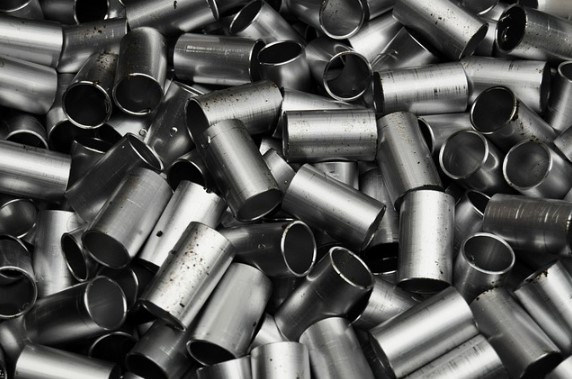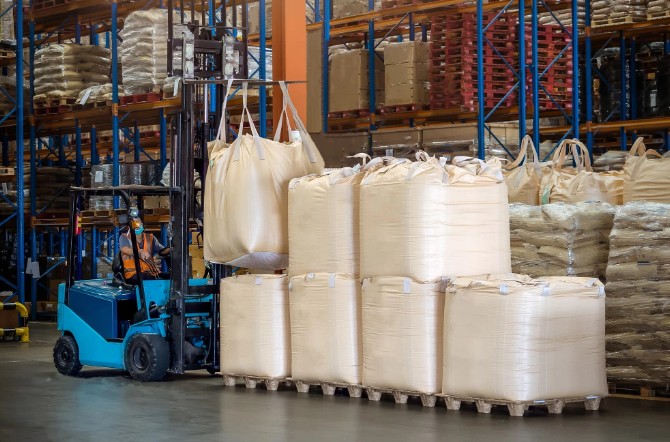Exploring the Versatility of Stainless Steel 430F (AISI 430F, 1.4104, X14CrMoS17) in Industrial Applications

Stainless steel 430F, part of the ferritic family of steels, is renowned for its excellent machinability and distinctive composition. This alloy contains approximately 16-18% chromium, alongside minimal amounts of carbon, silicon, manganese, phosphorus, sulphur, and molybdenum.
In its composition and mechanical properties, this alloy is similar to the stainless steel of grade 430; however, 430F is distinguished by its lower corrosion resistance and superior machinability due to the strategic addition of sulphur.
Stainless steel chemical composition
| Element | Weight % |
|---|---|
| Chromium (Cr) | 16 – 18 |
| Carbon (C) | Max 0.12 |
| Manganese (Mn) | Max 1.00 |
| Phosphorus (P) | Max 0.040 |
| Sulphur (S) | 0.15 – 0.30 |
| Silicon (Si) | Max 1.00 |
| Molybdenum (Mo) | Up to 0.60 (Optional) |
| Iron (Fe) | Balance |
Its primarily straight chromium content imparts a measure of corrosion resistance which, though not as high as that found in austenitic grades like 304, is sufficient for many applications. This balance between machinability and corrosion resistance makes it a valuable material in the production of numerous components and parts.
Understanding the unique attributes of stainless steel 430F is crucial for industries that value both efficiency in machining and the durability of their components. This alloy finds its niche by offering a cost-effective solution without compromising on the quality and longevity of the machined parts, standing as a testament to the ingenuity and versatility inherent in the development of stainless steel grades.
Mechanical Properties and Machinability
The allure of stainless steel 430F lies significantly in its mechanical properties and superior machinability, characteristics that make it especially appealing for manufacturing sectors. Its mechanical profile is tailored towards applications where ease of fabrication is key, despite it not being the strongest or most corrosion-resistant steel available.
Key Properties
Stainless steel 430F possesses a set of mechanical properties that, while modest in comparison to more premium stainless steel grades, are perfectly suited to its intended applications. The alloy does not harden in response to heat treatment, a factor that limits its use in environments requiring high strength. However, it maintains a good balance of ductility and hardness, ensuring that it can withstand operational stresses without significant deformation.
The standout feature of 430F is its enhanced machinability, attributed to the sulphur additions. This element acts as a lubricant within the steel matrix, reducing friction during machining and preventing the material from seizing up on cutting tools.
Welding may not be the best way of forming stainless steel 430F, because its sulphur content can make the process a bit more complicated. But still this same sulphur makes shaping it into complex designs easier, so choosing the right approach and materials is key for good results.
Machining Advantages
The machining efficiency of 430F stainless steel cannot be overstated. Its ability to be easily shaped and formed into intricate parts makes it invaluable in sectors requiring precision components, such as automotive, appliance manufacturing, and custom machinery. The sulphur content, while lowering the steel’s overall toughness, creates a material that’s much easier to work with, allowing for faster production times and a reduction in machining costs.
Higher precision makes it easier for minimising waste and maximising output.
Enhancing Your Operations with Stainless Steel 430F
- Value for Money: Compared to higher-grade stainless steels, 430F offers significant cost savings, making it an attractive option for businesses seeking budget-friendly solutions without sacrificing quality.
- Strength & Stability: While not the strongest stainless steel, 430F provides sufficient strength for a wide range of applications. Its stable properties ensure consistent performance over time.
- Inventory Consolidation: 430F’s versatility allows you to potentially standardize on a single material for various applications. This simplifies inventory management, reduces storage requirements, and streamlines your supply chain.
- Reliable Sourcing: 430F is a widely available material, making it easy to find reliable suppliers and ensuring consistent product quality.
- Recyclability: 92% of stainless steel 430F can be easily reused.
Stainless Steel 430F Applications Across Industries
Stainless steel 430F excellent machinability, decent corrosion resistance, and adequate mechanical strength enable its use in environments where both component precision and durability are valued.
Marine Industry
In the marine sector, 430F is utilised for parts that require good corrosion resistance but are not exposed to extremely harsh marine environments. Its application includes fasteners, fittings, and components of marine equipment that operate above the water line, where the risk of corrosion is comparatively lower.
Chemical Industry
The chemical industry benefits from 430F’s resistance to a wide range of mild chemicals and solvents. It is commonly found in parts and components of chemical processing equipment that do not come into direct contact with highly corrosive substances. For instance, supports, frames, and external parts of machinery can be constructed from 430F to leverage its corrosion resistance and ease of fabrication.
Machinery and Equipment
Due to its exceptional machinability, 430F is extensively used in the manufacturing of various machined parts. This includes gears, shafts, valves, and fasteners that require precise dimensions and smooth finishes. Its ability to be easily formed into complex shapes without compromising the surface integrity of the parts makes it a valuable resource in precision engineering.
Form Factors
Stainless steel 430F is available in a range of forms to suit diverse industrial needs, including sheets, bars, rods, and plates. This versatility ensures that it can be tailored to specific requirements, whether for structural components or intricate machined parts. For example, bars and rods are widely used for creating fasteners and automotive components, while sheets and plates may be employed in constructing parts for machinery or as panels in chemical equipment.






